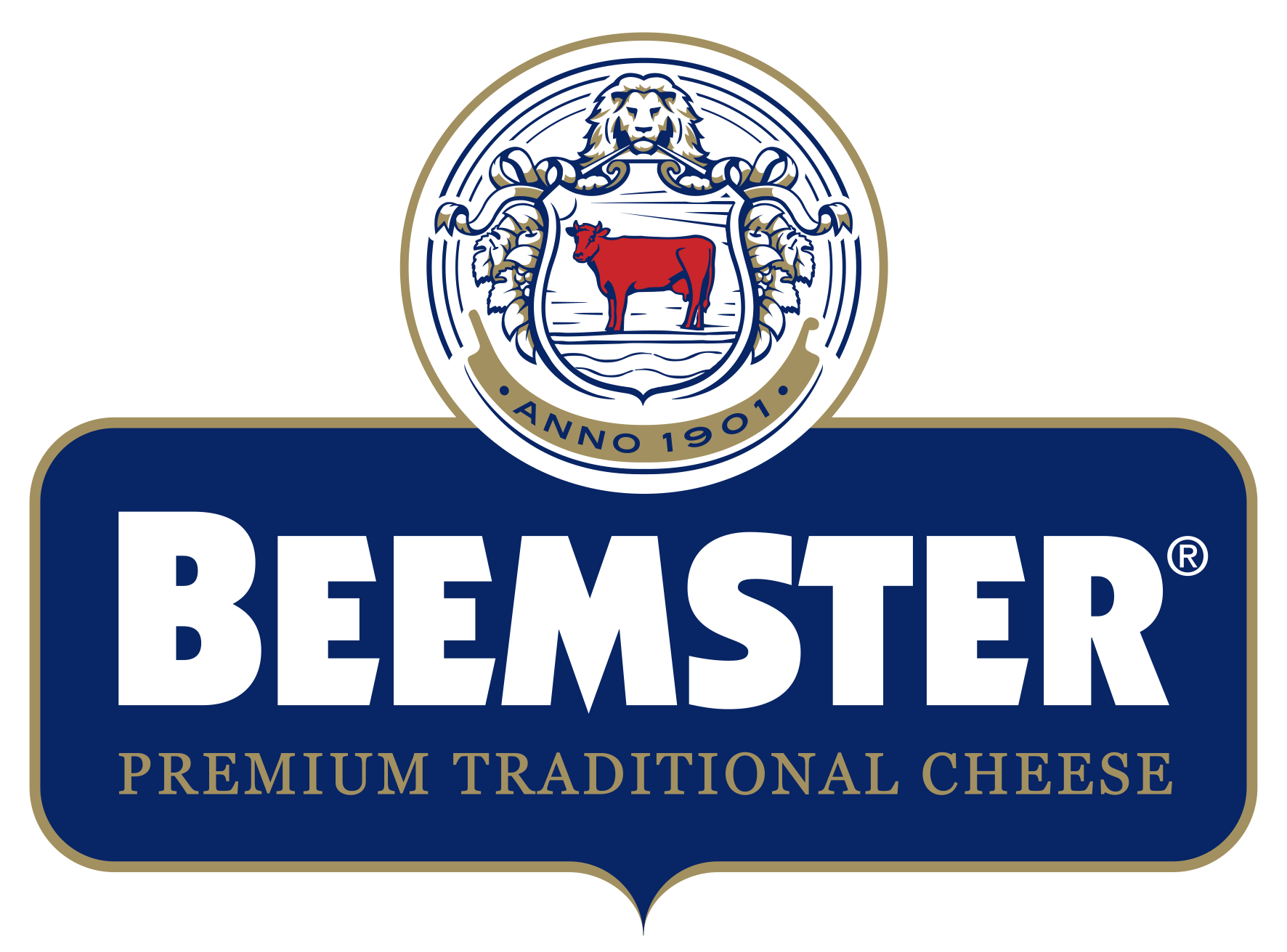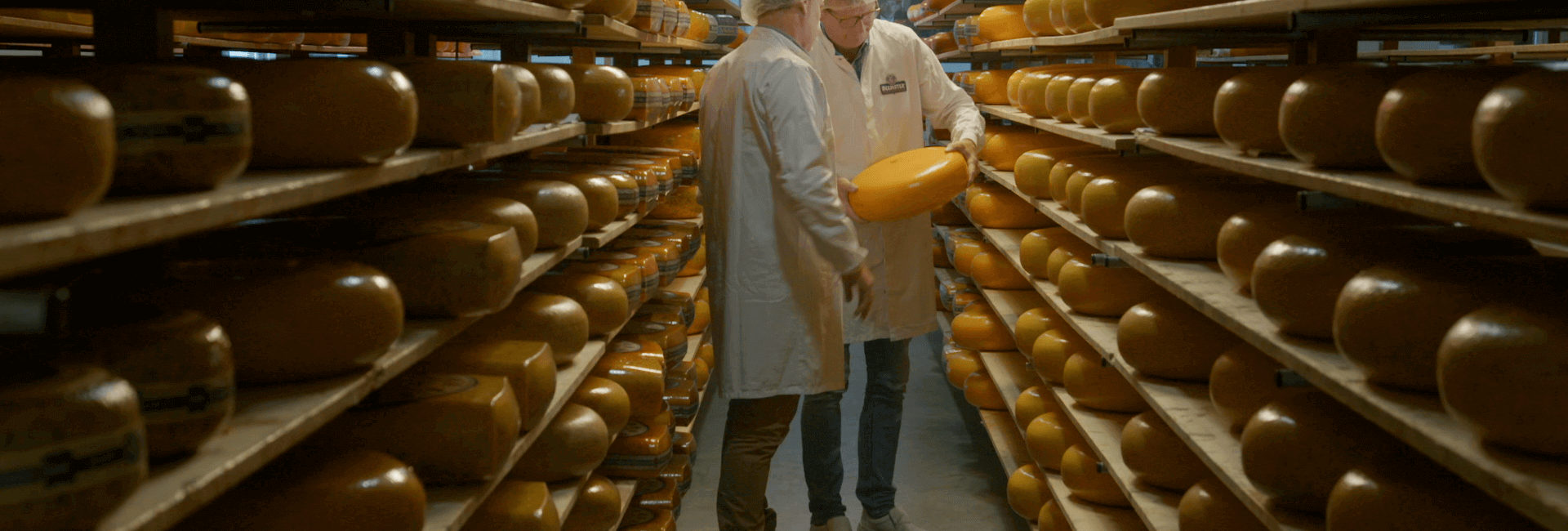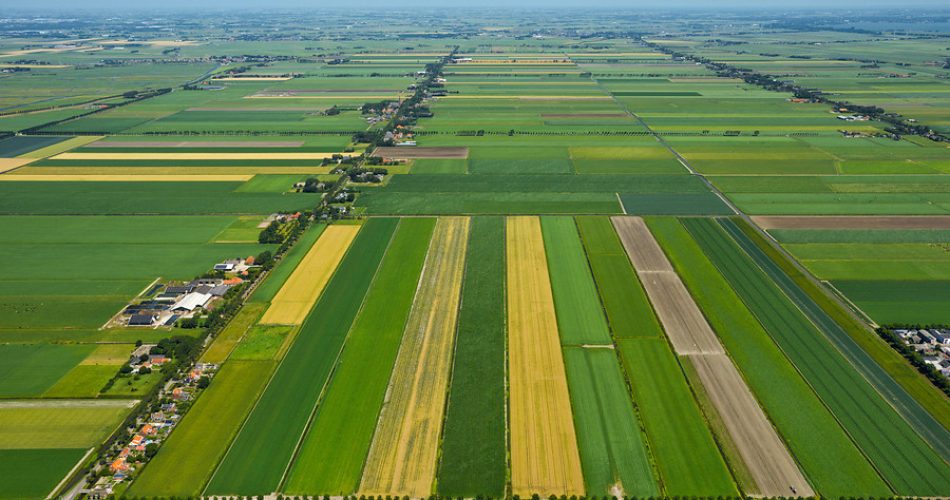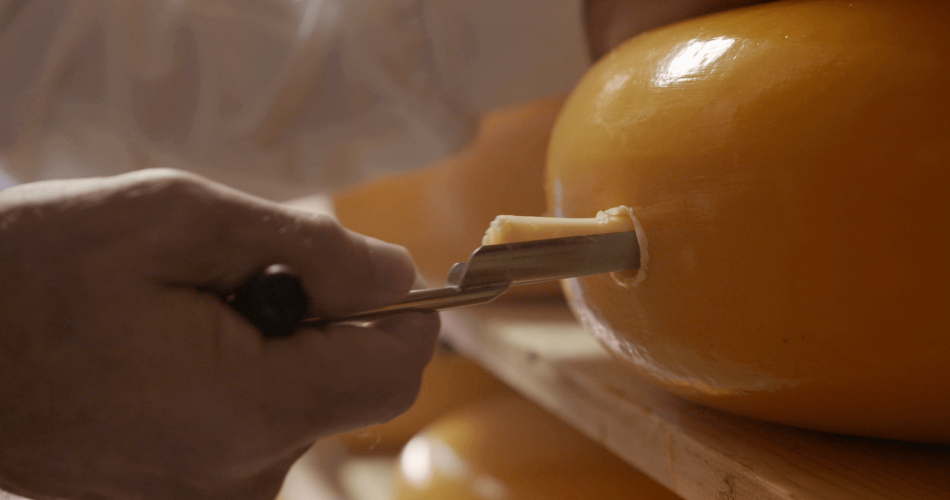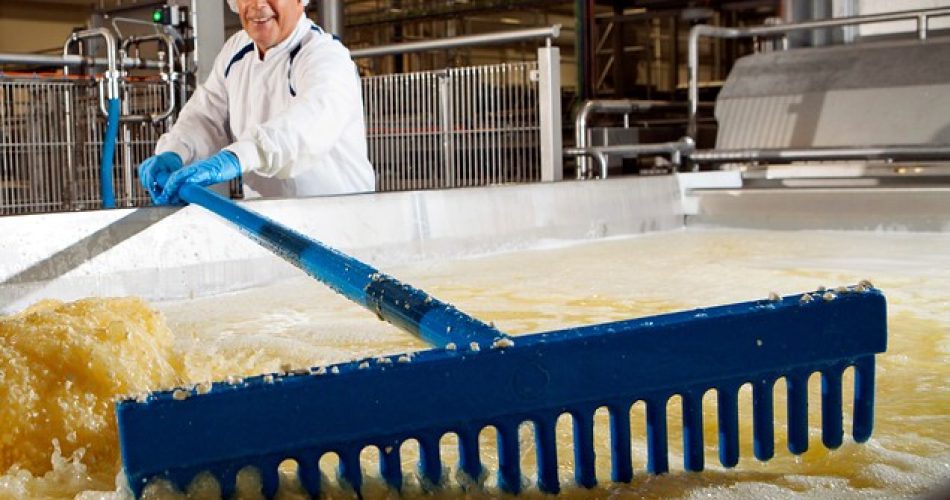We make Beemster cheese as it has been made for more than 100 years. We do this in our sustainable cheese factory. This means that our cheese makers use the most modern techniques and deliberately choose to continue making the cheeses in the traditional way. It takes a bit more time this way, we take that for granted, we like to do everything we can to make the tastiest cheese, without concessions. Only then can you make distinct cheeses, each with a unique taste and smoothness.
We start with the best ingredients: 100% North Holland meadow milk. You also need rennet and starter. Rennet causes the solids in the milk, milk protein and milk fat, to clump together. This makes the milk, as it were, thicker. Sourdust gives the cheese a delicious taste and ensures that the cheese has a longer shelf life.
The thick milk is then cut into pieces until small, white grains remain: this is called curd. The curd is manually stirred by our cheese master, creating an even “bed of cheese”. There is the punch line! Stirring the curd is very important for the final taste and smoothness of the cheeses, which is why we do it ourselves. As a final step, we compress the small cheese particles into large round cheese barrels. By the way, did you know that to make 1 kilo of Beemster cheese you need 10 liters of meadow milk?
Take a rest
After checking the cheese master, the cheeses can rest for 2 to 3 days in a brine bath, a large swimming pool with salt water. Our cheeses rest in a bath which still contains traces of the brine that we started in 1901. Crazy, but true! And good! It provides a unique taste. The salt soaks into the cheese, making the cheese firm and flavored.
Wood boards
After the brine bath, the ripening process begins where the cheeses develop their own taste. We do this on wooden planks. Wood has the property of absorbing moisture, which allows the cheese to ripen more beautifully. To maintain the beautiful round shape, our cheeses are turned regularly.
A young cheese needs several weeks to taste. And a cheese is only “matured” when it ripens for a few months. The cheeses ripen on wooden boards in a temperature and humidity, where they thrive best.
